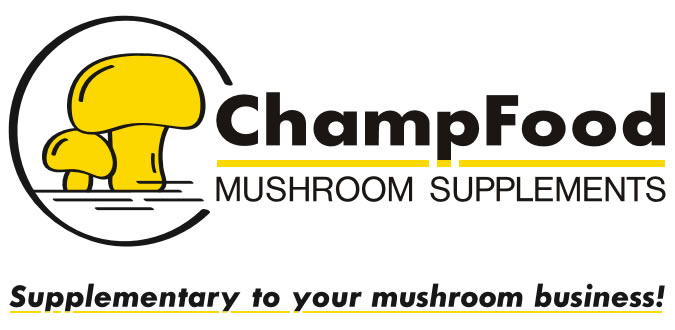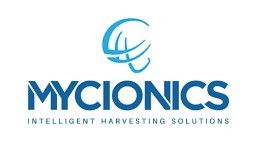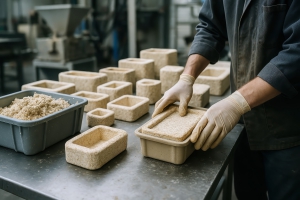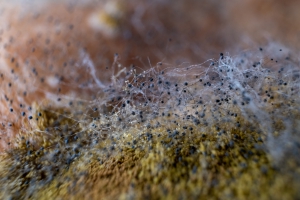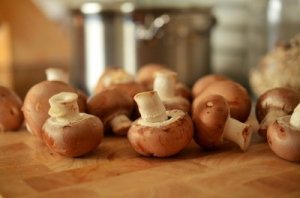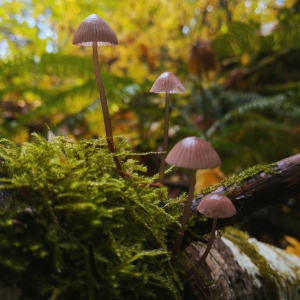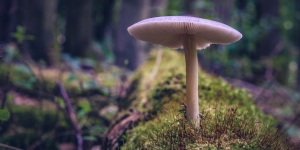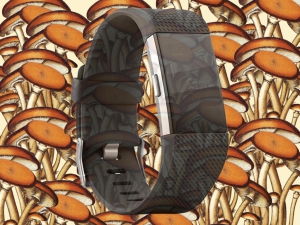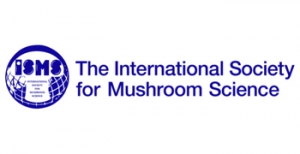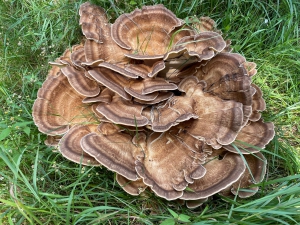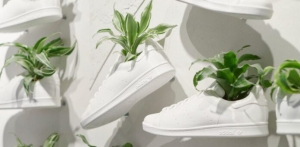When you think of mushrooms, you might picture them on your plate. But researchers in Spain are showing how fungi can also shape the future of packaging. Their latest project turns mushroom mycelium into a biodegradable, durable material that can replace plastic.
This is part of a growing global movement: companies in the US, Europe, and Asia are all exploring how fungi can tackle one of the world’s biggest waste challenges. By transforming side streams and agricultural by-products into packaging, mycelium offers a double win, reducing plastic pollution and making better use of resources.
For mushroom growers and industry players, it’s another example of how fungi are stepping outside the farm and into mainstream innovation.
by Mushroom Matter
Article of Mycostories in partnership with Solid Fermentation Innovation a consulting company specializing in research, development, scale-up and downstream processes of solid-state fermentation based products.
Solid-State Fermentation (SSF) has been with us for centuries. From koji and tempeh in Asia to traditional fermented cheeses and starters in Europe, SSF was how many cultures learned to work with microbes long before we used bioreactors and autoclaves. In the 1960s and 70s, the technique found a new home in enzyme production, with fungi used to produce amylase, chitinase, and proteases at commercial scale. Around the same time, SSF also entered the agricultural world as a method for producing biocontrol agents, mostly fungal spores grown on solid carriers.
Why Solid-State Fermentation Is Gaining Ground
But in the last three to five years, something big has shifted. We’ve seen a surge of interest in SSF across multiple industries. Why now? The reasons are both practical and cultural. On the one hand, SSF offers a compelling business case: it typically requires lower CAPEX (capital expenses) and OPEX (operational expenses) than submerged fermentation, it supports circular economy models through the use of agro-waste and side streams, and it enables the production of a wide diversity of metabolites and biomass types. On the other hand, the cultural rise of fungi, from gourmet mushrooms to mycelium leather, has helped shine a light on SSF as a forgotten but powerful platform.
A growing, cross-sector wave of innovators is embracing SSF. As Dr. Barak Dror, co-founder and CEO of Solid Fermentation Innovation (SFI), puts it: “We saw early signs of this shift and started tracking it closely, what emerged was a broad movement across industries, each adapting SSF to their own needs.” SFI’s recently updated open-access database lists over 90 companies, from meat alternative startups to biocontrol firms, now applying SSF to produce everything from mycoprotein and enzymes to packaging foams and active pharmaceutical ingredients. That breadth tells a story: while SSF is still considered niche, it’s quickly gaining traction as a promising method for working with fungi and other microorganisms in high-impact applications.
Please read the full article here.
Source: Mycostories
As winter fast approaches, consumers begin to adorn themselves with warm jackets and rejoice in the cheer of the festive period. However, a powerful sense of dread can often creep into the minds of many during this time as a torrent of coughing and spluttering commuters threaten to ruin their fun. However, there may be a hope for these would-be revellers as many nutraceuticals have shown significant promise in terms of supporting immune health, even during the dreaded flu season.
Currently, there is a huge range of functional ingredients that has been proven to promote immune health, including biotics, botanicals and vitamins. However, there’s one group of nutraceuticals that has been growing in popularity in this area in recent years, and that’s mushrooms.
Although mushrooms have been used for centuries in natural medicine, scientists have recently discovered their potential to support gut health, cognition and concentration. Further research has also highlighted the potential of functional mushrooms to boost immune health, whether that be through dietary intake or via supplements. To find out more about potential of fungal species in the immune health space, Annabel Kartal-Allen spoke to Bill Chioffi, Chief Operating Officer at Nammex.
Source: NBR Magazine
As the sun's warm embrace blankets the earth, a quiet wonder emerges beneath the forest canopies, in fields, and even in our own backyards. Mushrooms, those enigmatic and diverse organisms, have their own story to tell during the summertime. From vibrant hues to hidden ecosystems, let's embark on a global adventure to explore how mushrooms flourish during this magical season.
1. Bountiful Forests of North America
In North America, the summertime brings forth a bountiful display of wild mushrooms. From the iconic morels to the majestic chanterelles, forests come alive with a myriad of shapes, colors, and flavors. Enthusiastic foragers take to the woods to harvest these gastronomic treasures, while fungi experts study their ecological roles. The diverse landscapes of the continent offer a playground for mushrooms, showcasing the symbiotic dance between these fungi and the trees they call home.
2. European Forests
Across the Atlantic, European forests present their own captivating tales of summertime mushrooms. The enchanting forests of France, for instance, are famous for their delectable truffles. Skilled truffle hunters and their faithful dogs work tirelessly, seeking the precious fungi hidden beneath the earth. Meanwhile, the United Kingdom's woodlands come alive with fairy tale-esque mushrooms, like the iconic fly agaric, adding a touch of whimsy to the landscape.
3. The Fungi Fiesta in South America
In the lush rainforests of South America, a fungi fiesta unfolds during the summer months. These tropical forests, teeming with life, harbor an incredible diversity of fungi, many of which remain undiscovered by science. These mushrooms play vital roles in the ecosystem, breaking down organic matter and supporting the balance of the rainforest.
4. The Magic of Asian Fungi
Across Asia, a rich tradition of mushroom cultivation and consumption has been practiced for centuries. From the revered shiitake to the intriguing lion's mane, Asia's mushroom culture is deeply intertwined with its culinary heritage and traditional medicine. The summertime in Asia brings forth an abundance of mushrooms, enriching the regional cuisine and adding a burst of umami flavor to dishes.
5. Hidden Gems in Australia
Even in the arid landscapes of Australia, mushrooms find a way to thrive during the summer months. Fungi like the desert truffle emerge from the sandy soil, revealing the adaptability and resilience of these organisms. In this challenging environment, mushrooms play a unique role, contributing to the delicate balance of the ecosystem.
From the mystical forests of North America to the rainforests of South America, the summertime mushroom stories from around the world reveal the incredible adaptability, diversity, and significance of these organisms. As we enjoy the warm months, let's take a moment to appreciate the hidden wonders beneath our feet - the mushrooms that quietly remind us of the magic of nature and its ceaseless cycles of life and renewal. Whether foraging for a culinary delight or simply reveling in the beauty of these fungi, the summertime offers a perfect opportunity to connect with the fascinating world of mushrooms.
‘fungi stool’ BY satoshi itasaka
In an effort to learn more about natural decomposers such as fungi and bacteria, Japanese designer Satoshi Itasaka unveils the ‘Fungi Stool’. As its title suggests, the stainless steel and wood stool is composed of fungi that grow and bloom, like flowers, into mushrooms.
‘It is no exaggeration to say that the cycles of nature are carried out by bacteria and fungi,’ Itasaka notes. ‘Bacteria and fungi have been the decomposers in the food chain keeping the earth’s environment in a healthy state. They are the ones we should follow for we are constantly putting a burden on the earth in terms of the global environment.’
Preserving fungi decomposers
Satoshi Itasaka’s Fungi Stool highlights the importance of preserving fungi decomposers as they play a crucial role in our ecosystem. It also proposes a more sustainable direction to furniture design. Its seat is made up of a circle of six discs that somewhat resemble mushroom caps huddled next to each other.
‘There are about 100 trillion bacteria in our bodies’, the product designer explains. ‘Therefore, we live in symbiosis with about three times as many bacteria as our own cells. Although we are sometimes tormented by bacteria, the environment in which we live would not be possible without decomposers such as fungi and bacteria. The world is in the midst of a sanitization boom, but I designed a device to learn more about these decomposers, not to get rid of them. I found that the fungi grew unexpectedly in that apparatus. The fungi grew and blossomed like flowers, producing numerous beautiful mushrooms.’
Source: Designboom
A team of Western mycologists (fungi experts) spent the past two summers digging deep in Newfoundland dirt to investigate the might of mushrooms and found what lies beneath truly is 'the main character' in most terrestrial ecosystems.
Fungi, which produce mushrooms, are critically important in most earthbound ecosystems as they provide life-sustaining mineral nutrients to plants while decomposing their remains, and recycling both organic and inorganic byproducts throughout the biome as they grow and reproduce.
"A lot of ecologists are beginning to realize that mushrooms really run the world. We've quite naturally spent a lot of our time focusing on things above ground, things that we see like plants, animals, and birds," said Western biology professor Greg Thorn. "But in fact, the plants are very closely associated with fungi, and basically wouldn't be there (above ground) without them."
Please read the full article here.
Source: Phys.org provided by University of Western Ontario
‘Shroom FitBit: Processors In Tech Wearables Could Be Replaced With Fungi Mycelium, New Study Finds
In a recent study titled ‘Reactive fungal wearable‘, researchers explore the use of fungi as a potential candidate to produce sustainable textiles that can be used as eco-friendly bio wearables, for instance, the processors in tech wearables like Fitbits could be replaced by incorporating mushroom mycelium.
The joint research venture undertaken by the University of the West of England, Bristol, the U.K. (UWE Bristol) and collaborators from Mogu S.r.l., Italy, Istituto Italiano di Tecnologia, Torino, Italy and the Faculty of Computer Science, Multimedia and Telecommunications of the Universitat Oberta de Catalunya (UOC) has assessed the sensing potential of fungal wearables.
The researchers of the study conducted several laboratory experiments on the electrical response of a hemp fabric captured by oyster fungi by attaching it to computer sensors and stimulating it with attractants and repellents.
Wearable devices require complex and sophisticated circuits that connect to sensors having at least some computing power, thus making them ‘smart’.
Oyster mushroom mycelium, the fibrous mainframe tissues of fungi that populate under the soil and from which mushrooms sprout was able to perceive several external stimuli like light, temperature, and moisture, as well as certain chemicals in the environment, and even electrical signals in a way that imitates the same function for sensors and processors.
To explain this concept further, we use an example of a heart rate monitor, and using the study’s findings, the mushroom’s perceptions of the environment would become the data that gives you the beats-per-minute count on this device.
Please read the full article here.
Source: Green Queen
Lead image – Experimental setup, courtesy of ‘Reactive fungal wearable’ study.
Mushroom 2021 ISMS e-Congress
The ISMS organized a live online congress in September, which came to a close on Friday the 17th. 288 delegates, authors and presenters took part in the event.
Big news was provided by Rachel Roberts, President of the American Mushroom Institute (AMI). She announced that the 2024 ISMS Congress will be held in conjunction with the 2024 North American Mushroom Conference.
If you weren't able to attend the unique e-congress in September, you are still able to download interesting information like videos and live stage recordings.
You can find the information and the download material here!
Let's celebrate the mushroom!
Over the entire world there are tons of days that are pinned to a topic. That’s the reason why on September 26 in Europe and on October 15 in America, people celebrate the fact that there are mushrooms in our lives, under the name (Inter)National Mushroom Day.
This day was created to give extra attention to the mushroom. If you never got beyond (oyster)mushrooms, then a world opens up to you in the forest. Because so much rain has fallen in the recent months, it’s really a 'Party in the forest'.
But on this day there is also the need to make the protection of habitats of rare and endangered mushrooms, more clear to the public.
You can pick mushrooms and easily grow them at home yourself! Or just continue to enjoy the mushrooms in the forest.
In case you didn’t already know, mushrooms are fleshy fruiting bodies of fungi and there are a variety of species. They are known for their high nutritional value and contain vitamins B and C, potassium, phosphorus, calcium, sodium and zinc. If you want to live a healthy life, eating delicious mushrooms are definitely recommended.
So put these dates in your diary and celebrate this day with delicious prepared mushroom dishes. This way you can have a lot of fun celebrating this special day!
Adidas has announced it’s launching a line of sneakers made from mushroom-based leather.
As part of a 2021 sustainability initiative from Europe’s largest sportswear manufacturer, the new Stan Smiths will be entirely vegan, and created using mycelium: that is, the vegetative part of fungi that produces mushrooms.
On December 28, the German multinational announced that “adidas seeks to break new ground: Together with partners, adidas is developing a new material, a purely biological leather alternative made from mycelium, and will use it for the very first time in the creation of footwear.”
This isn’t the company’s first foray into vegan footwear. In 2020, Adidas launched plant-based versions of several classic sneakers, which quickly became bestsellers. Now it’s completely renounced the use of fur in all products, and it’s working with partners on other sustainability projects that include recycling cotton and developing a “particularly climate-friendly running shoe” as part of a drive that will see 60% of all Adidas products in 2021 being made with sustainable materials.
Please read the full article here.
Source: Good News Network


